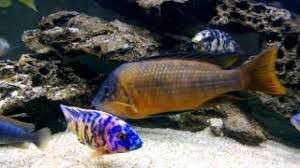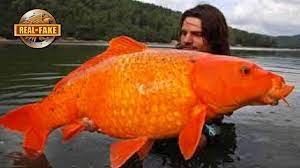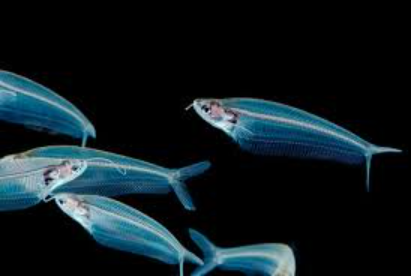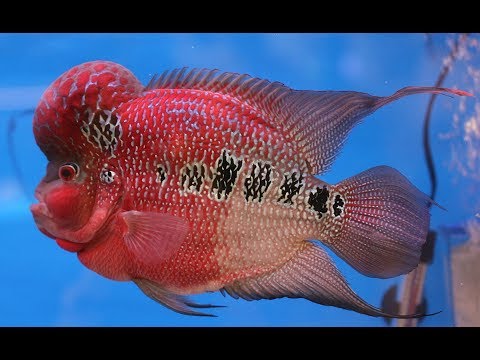The Mbuna Aquarium
7 years ago admin 0
About Mbunas
Mbunas, are the perfect fish for beginners. Their colors are flamboyant, breeding is easy, they are robust and, above all, intelligent.
Today, we’re talking about Mbunas. First of all, what is an Mbuna? In the dialect of the Tonga people of Lake Malawi, Mbuna means “rock fish”. Mbuna is a term used to group different cichlids from Lake Malawi cichlids according to their dention.They have to originate form Lake Malawi to be considered an Mbuna. How to recognize an Mbuna? To the untrained eye, it can be pretty hard. Frankly, to my trained eye, it can be hard as well. I’ve honestly made mistakes trying to identify fish. I would identify them ashaps when they should be Mbunas. It just happens.
Mbuna species
There are so many species in this group. Mbunas come in many shapes and sizes. Youhave some that are 3” max sometimes they are 6”.You have some that have a round face to graze algae, others don’t. Some are colorful, some are more brown; Some species have sexual dimorphisms, others don’t. That means that in some species, the male and female are different and in others they are the same and you’ll never be able to find out unless you vent them. Mbunas are a fascinating fish because of their complex social behavior. Within a group of the same species, they will develop a hierarchy.
The dominant male will be the most colorful and will have the bestcaves. He will be the one breeding with all of the females . The others will be colorful as well but not as flamboyant. There even is a hierarchy between the females but it’s more of a mental manipulation as they all breed with the dominant male. Mbunas are not schooling fish but, in the aquarium, they are best kept in groups of 4 or more and NEVER….and I say NEVER… as a couple. They can get extremely aggressive one towards the other and you might be picking out a dead fish within the week.
Mbuna habitat
Where do Mbunas live? They live throughout lake Malawi in, you guessed it, the rocky habitat of Lake Malawi. It’s a “rockfish”. In the aquarium, they are best kept in rocky aquascapes. Make sure that there are enough caves for everybody. If you prefer the artificial aquascape (castles, sunken ships, etc), get decorations with many holes and places that they can dig under. It’s important to know that Mbunas are extremely territorial. This is why it’s important to keep them in large groups and to give them enough caves for everybody.
A must in the aquarium, in the Mbuna aquarium, I suggest this to everyone, I love it, it’s the best decoration. It’s the hanging artificial plant. This is made for reptiles but we use it in the aquarium. When the cichlids fight, their reflex is to hide behind the filter tubing in the top of the aquarium. If they don’t have a good hiding spot, they will be stressed out because they will always see the dominant fish and vice-versa. Even though there are barely any plants in the wild, I find that artificial or natural plants are a great addition to the Mbuna aquarium.
The aquarium
You want to go for natural plants, you are very limited in the number of plants that can actually thrive in such a high pH and GH. Stick with anubias, vallisneria, or javafern. . Substrate : Use pH augmenting substrate such as aragonite or any substrate that is fabricated for cichlids, african cichlids. Mbunas love to move those little rocks around. If your substrate is fine, such as the sahara cichlid sand, which is my favourite, they will sift it through their gills.
Most Mbunas will thrive in aquariums that are 30 gallons or more. But be Careful! Some fish can grow up to 6 inches so, as you guessed it, 30 gallons is a little small for them. For these, you’re going to want to go in 55 gallons or up. If you want to know how big your fish is going to get, I’m going to link to you a couple of nice references. In some of these ressources, each species has their own home page filled with information. Go check that out. Use these. Put them in your favourite bar.
Breeding Mbunas
Breeding Mbunas is easy and fun. They are mouth brooders. This means that they will keep the fry in their mouth for 3 to 5 weeks. During this time, the female will not eat. This is normal. They are made like that. At the end of her pregnancy, she will spit out the fish in the water If you’re lucky enough to see that, it’s quite a sight. This is the case for all cichlids in Lake Malawi, even the non-Mbunas. What to do when you female is holding? Well you can do 1 of 2 things. You can either let her go in the aquarium. She will have fry every few months over her life.
There will be enough babies, you’re going to have a load of fun. The little ones will hide in the plants or in the little holes in the rocks and they will survive and they will just feed off of the food that falls to the ground. The other option is to isolate the female after 2 weeks at least of holding. If you leave her in the aquarium, she’ll be swimming around for those two weeks whereas if you isolate her, she’s not moving for 2 weeks. She can get lethargic, it’s not good for her muscles, for her strength, she’ll lack energy when she gives birth.
Hybrids,/h3>
A very important subject that we have to talk about is hybrids. This can happen in the aquarium with Mbunas with similar species or If you only have 1 of each species, a female of one, a male of the other. Usually it happens with similar species like a Labidochromis caeuleus, a yellow lab and a Metriaclima estherae, a zebra cichlid, they look similar, they could hybrid. If you have 4 of each, there are less chances. Hybrids are extremely frowned upon. Another mix that is frowned upon is origin mixes. So you have the same species. A good example is Cynotilapia zebroide. You have those available on the market from many different origins.
If you mix them together, you lose the quality of the fish because the colors are different from one place to the other. You lose the original color of the fish. Mbuna hybrids are usually a lot less colorful and can be very aggressive. As aquarists, it’s our responsibility to maintain and protect the diversity of nature. Hybrids or origin mixes should not be kept or sold. Mixes can happen because our eco-system is so closed. It’s so tiny. What happens in here is not as nature intended. We had a forcing hand in it. To avoid mixes, don’t keep only one of each species, keep them in groups of 4 or more and avoid keeping similar mbunas.
Mbuna diet
In the wild, mbunas diets are extremely diverse. You have herbivores,strict herbivores, omnivores&
insectivores. There are a little less of the last one but one of the most common mbunas is an insectivore. That’s the Labidochormis caeruleus, the yellow lab. You won’t be able, in the mbuna aquarium, to have everybody’s specific diet because, if you have omnivores and herbivores, the herbivores aren’t just going to eat the herbivore pellets and the omnivores aren’t going to only eat the omnivore pellets. They will just eat anything that’s in front of them. They trust you with their lives. What you’re going to do is you’re going to feed a herbivore diet.
The insectivores and omnivores will adapt to that. Of course, if you have a tank and you only chose insectivores or omnivores. Feed free, feed the omnivorous food. It’s great for them. You’re going to want to look for spirulina and kelp as main ingredients in the food that you’re going to feed your Mbunas. Also, herbivorous foods are also laced with marine protein such as whole krill, stuff like that. This is because, when they,re grazing algae on the rocks, there’s a lot of inverts that live in there. Mbunas often have the enzymes to digest marine protein, just not in too big a quantity.
Fish health
f you have herbivores in your tank and you feed them food that’s not appropriate for them, it can have drastic effects on your fish’s health. These effects are even more intense on strict herbivore. There are 3 possible options. They can bloat, get skinny or obese. Bloat can be seen in the belly. It gets big. This is because they are eating too much marine protein or if they ate too much. When they get skinny, it’s also in the belly.It goes in. This is because the food is cheap. You’re feeding cheap food! Cheap food doesn’t have enough digestible proteins so everything just passes through and they don’t keep anything.
Obesity can be seen around the neck line. It will get bigger. You’ll have their headand then their fat neck. This happens when the food is too fatty or has too much marine
protein. Certain species such as the Metriaclima sp. “dolphin”, or the Giant demasoni, which is not to be confused with the Pseudotropheus demansoni. The dolphin mbuna is very susceptible to getting obese if you feed it an omnivorous diet. It will not bloat, but it will get obese. It depends on the fish.
Astatotilapia
There is one, that I really want to talk about. It is the Astatotilapia. Many of you have heard this name but usually from Lake Victoria. It’s because there are Astatotilapia in all the 3 great lakes. There are different groups. The Astatotilapia from Lake Victoria is not the same as the one from Lake Malawi. In Lake Malawi, it’s called Astatotilapia calliptera. You remember how I was saying that even to the trained eye, people can make mistakes. Well, for YEARS I was calling this a Hap. because just look at it’s shape. It’s clearly a Hap. But no it’s not… it’s dentition is different. It’s not a hap. but it looks like one.
The Astatotilapia calliptera, on top of looking like a hap and getting our minds all mixed up is actually found in the rivers and lakes around Lake Malawi. To be an Mbuna, they have to originate from Lake Malawi, and that’s the case of this one. This is an adventurous mbuna and he migrated to the other lakes. It’s the only one who did this. It’s actually while researching for this vlog that I found that out and it’s in the book from Ad Konings. He grouped it with the Mbunas. I was looking for information on the web and I couldn’t find it. I just eventually emailed the Doctor and he confirmed that it IS an Mbuna. Actually,
From Lake Malawi
2015 is when they studied and found out that it originates from Lake Malawi.So that was just a little parentheses to say that I really like that fish. A special shout out to Michael for letting me use his Mbuna aquascape for my video. If ever you want to help, I have amazing footage of fish but I don’t do aquascapes. It’s hard for me to talk about decorations because all I have are the ones at my store, which are adapted to a store.
If ever you want to contribute a video for my next themes which are Peacocks/Aulonocara, Haps, Tanganyikan carnivores & Tropheus. Leave me a link in the comment section. I appreciate all the help I can get. Thank you so much.
Don’t buy poor fish
Now you should have everything you need to start off your Mbuna aquarium. Don’t forget to buy Mbunas from reputable sources. If ever you go to a pet shop and they’re selling sick fish or hybrids or whatever, advise them of this. Tell them: “your fish are sick, they’re not healthy.” and don’t buy from them. If you tell this to people, it’ll get these businesses thinking. They want to expand their clientele so they will consider what you said and you might actually see a change and grow the quality of cichlids in your region. So that’s it for today. I hope you liked this video and it was a lot of help.
(Advertisement) Please click here for Live Mbuna cichlids and equipment on Amazon





